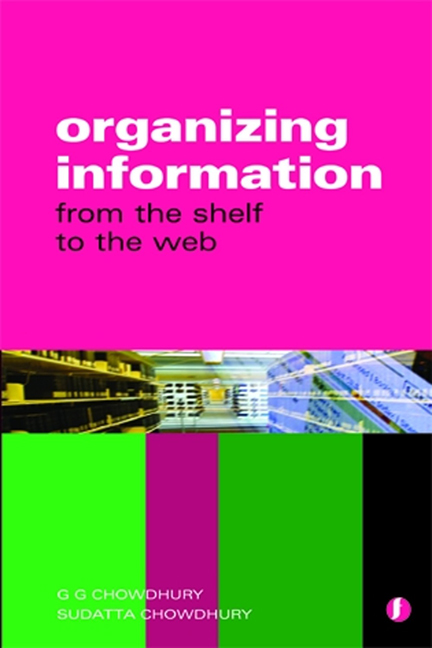Book contents
- Frontmatter
- Dedication
- Contents
- Preface
- Glossary
- 1 Organizing information: what it means
- 2 Information organization in non-library environments
- 3 Cataloguing
- 4 Bibliographic formats: MARC 21 and others
- 5 Library classification
- 6 Subject heading lists and thesauri in information organization
- 7 Organization of internet information resources
- 8 Metadata
- 9 Markup languages
- 10 Ontology
- 11 Information architecture
- 12 The semantic web
- 13 Information organization: issues and trends
- Index
Preface
Published online by Cambridge University Press: 10 September 2022
- Frontmatter
- Dedication
- Contents
- Preface
- Glossary
- 1 Organizing information: what it means
- 2 Information organization in non-library environments
- 3 Cataloguing
- 4 Bibliographic formats: MARC 21 and others
- 5 Library classification
- 6 Subject heading lists and thesauri in information organization
- 7 Organization of internet information resources
- 8 Metadata
- 9 Markup languages
- 10 Ontology
- 11 Information architecture
- 12 The semantic web
- 13 Information organization: issues and trends
- Index
Summary
Over the past few years, LIS (library and information science) departments have, for various reasons, reduced their teaching of classification and cataloguing – the essential skills, and the corresponding tools and standards, required for organizing information. Today, very few LIS schools and departments in the UK or abroad offer a full and compulsory course module on information organization. The main argument supporting this move was that libraries could easily get readymade class numbers and catalogue records for bibliographic resources and hence there was no need to emphasize classification and cataloguing. This is not a very strong or appropriate justification. Given the current state of developments in terms of the internet, the web and digital libraries, the need for organizing information has increased significantly.
In a digital library, more specifically in a hybrid library (a library providing both traditional and digital library services), information professionals need to be prepared for organizing both printed and digital information resources, and in many cases ready-made class numbers and catalogue records are not available (particularly for digital information resources). In fact, quite often LIS professionals have to try to find the most effective means of organizing such information resources themselves. In addition, every organization/institution now produces a great deal of digital information, and their day-to-day activities heavily depend on access to, and use of, the appropriate digital information resources. This reinforces the need for appropriate organization of institutional information resources for better access and management. Indeed, many new approaches, tools and techniques have emerged over the past few years for such activities. It is therefore suggested that tomorrow's LIS professionals should be conversant with these, and with the skills for organizing information in all the different domains – from the traditional to the web and digital library shelf.
This book aims to cover the broad spectrum of information organization in different environments – from print libraries to the internet, intranet and web. It discusses the tools and techniques and the advantages and disadvantages of various approaches to organizing information. Covering every aspect of these is not possible within a single book. However, this book aims to provide a good coverage of the entire spectrum of information organization which will educate tomorrow's information professionals about the entire field, and will lead interested readers to further studies and research by pointing them to the appropriate references.
- Type
- Chapter
- Information
- Organizing InformationFrom the Shelf to the Web, pp. xiii - xviPublisher: FacetPrint publication year: 2013



